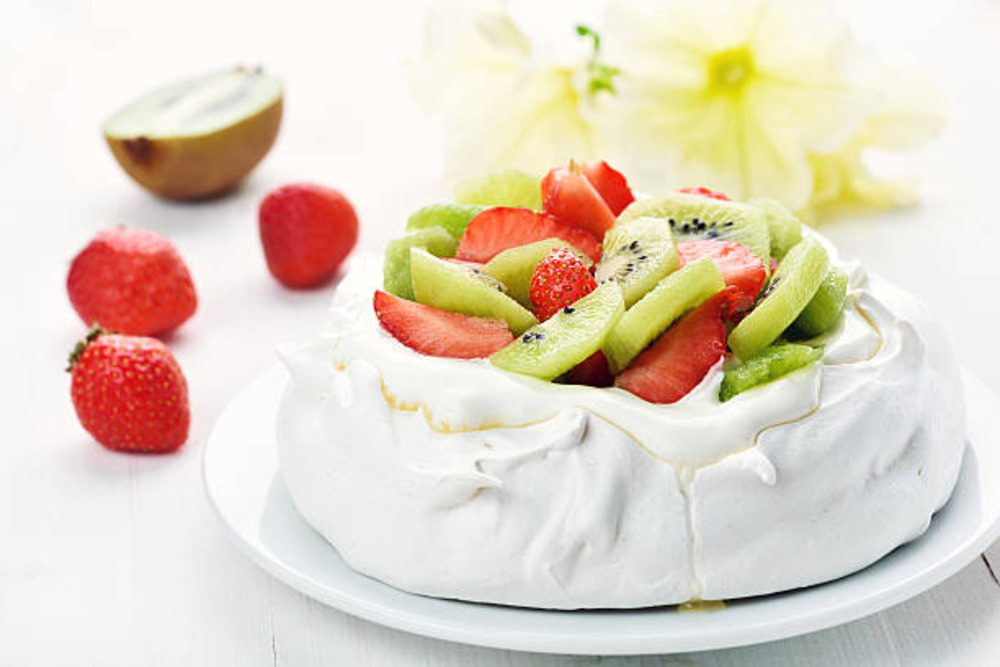
Pavlova Recipe
Pavlova boasts crisp edges, a chewy top, and a soft, marshmallow-like center. Top it generously with lemon curd, whipped cream, and fresh fruit for a naturally delicious, gluten-free dessert!
Print
Pin
Servings: 8 servings
Ingredients
- 1 cup 200g superfine sugar*
- 4 large egg whites reserve the yolks for lemon curd!*
- 1 teaspoon cornstarch
- 1 teaspoon pure vanilla extract
- 1/2 teaspoon cream of tartar*
Toppings
- Homemade whipped cream fresh fruit, strawberry topping, lemon curd, or any desired topping (see post for suggestions)
Instructions
- Begin by preheating your oven to 350°F (177°C). Prepare a large baking sheet with parchment paper or a silicone baking mat. (Note: You'll quickly reduce the oven temperature to 200°F (93°C) in step 4.)
- Using either a handheld mixer or a stand mixer fitted with a whisk attachment, beat the egg whites on medium-high speed until they form soft peaks, which should take around 5 minutes. Gradually add the superfine sugar in two batches, beating for 30 seconds between each addition. Once all the sugar is incorporated, increase the mixer speed to high and continue beating until the mixture is glossy and forms stiff peaks, approximately 2 more minutes. The peaks should be firm enough to stand upright without moving when you lift the whisk. Add the vanilla extract and continue beating for another minute to ensure the peaks remain stiff. If they don’t, keep mixing on high speed. Gently fold in the cream of tartar and cornstarch using a rubber spatula.
- Shape the pavlova mixture into an 8-9 inch circle on the prepared baking sheet. If desired, use the back of a large spoon to create decorative peaks, ensuring the edges are tall and the center has a slight dip.
- Place the pavlova in the oven. Immediately reduce the oven temperature to 200°F (93°C) upon closing the oven door. The pavlova will bake and cool down to 200°F (93°C). Bake for about 90 minutes, or until the pavlova is firm and dry. Rotate the baking sheet if you notice any browning spots, but try to minimize opening the oven door to prevent cool air from affecting the baking process.
- Once the baking time is complete, turn off the oven and allow the pavlova to cool completely inside the oven. When cooled, it can be stored at room temperature, covered, for up to 2 days. Alternatively, you can serve it immediately.
- Top the cooled pavlova with homemade whipped cream and your choice of assorted toppings. Slice and serve to enjoy.
Notes
Make Ahead Instructions: Refer to step 5 for instructions on preparing the pavlova in advance. It's best enjoyed immediately after garnishing and does not freeze well.
Special Tools:
- Electric Mixer (Handheld or Stand)
- Baking Sheet
- Silicone Baking Mat or Parchment Paper
- Marble Cake Stand or Serving Platter
- Room temperature egg whites whip faster and achieve a greater volume than cold ones. Ensure your egg whites are at room temperature before starting.